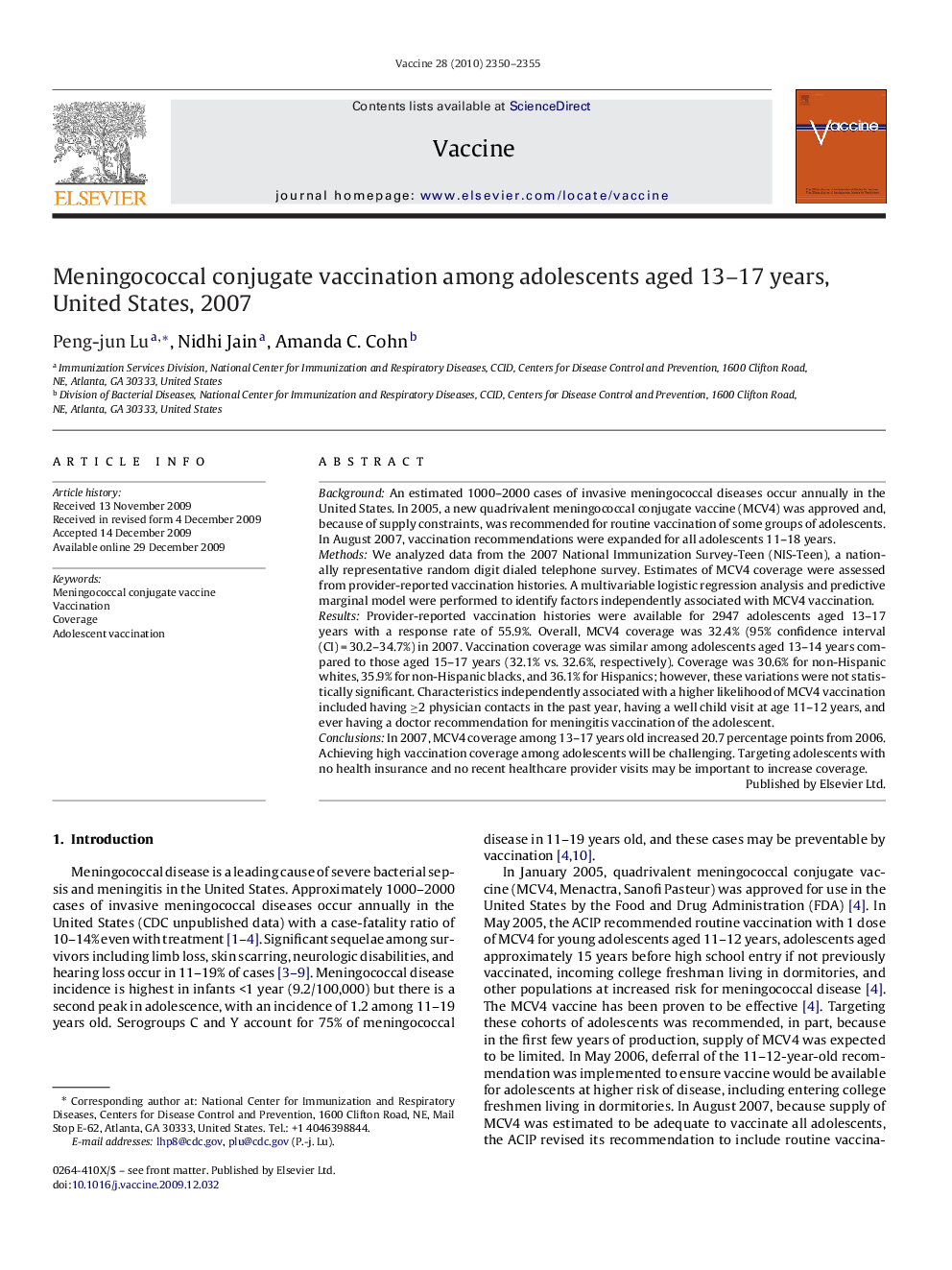| Article ID | Journal | Published Year | Pages | File Type |
|---|---|---|---|---|
| 2404816 | Vaccine | 2010 | 6 Pages |
BackgroundAn estimated 1000–2000 cases of invasive meningococcal diseases occur annually in the United States. In 2005, a new quadrivalent meningococcal conjugate vaccine (MCV4) was approved and, because of supply constraints, was recommended for routine vaccination of some groups of adolescents. In August 2007, vaccination recommendations were expanded for all adolescents 11–18 years.MethodsWe analyzed data from the 2007 National Immunization Survey-Teen (NIS-Teen), a nationally representative random digit dialed telephone survey. Estimates of MCV4 coverage were assessed from provider-reported vaccination histories. A multivariable logistic regression analysis and predictive marginal model were performed to identify factors independently associated with MCV4 vaccination.ResultsProvider-reported vaccination histories were available for 2947 adolescents aged 13–17 years with a response rate of 55.9%. Overall, MCV4 coverage was 32.4% (95% confidence interval (CI) = 30.2–34.7%) in 2007. Vaccination coverage was similar among adolescents aged 13–14 years compared to those aged 15–17 years (32.1% vs. 32.6%, respectively). Coverage was 30.6% for non-Hispanic whites, 35.9% for non-Hispanic blacks, and 36.1% for Hispanics; however, these variations were not statistically significant. Characteristics independently associated with a higher likelihood of MCV4 vaccination included having ≥2 physician contacts in the past year, having a well child visit at age 11–12 years, and ever having a doctor recommendation for meningitis vaccination of the adolescent.ConclusionsIn 2007, MCV4 coverage among 13–17 years old increased 20.7 percentage points from 2006. Achieving high vaccination coverage among adolescents will be challenging. Targeting adolescents with no health insurance and no recent healthcare provider visits may be important to increase coverage.
